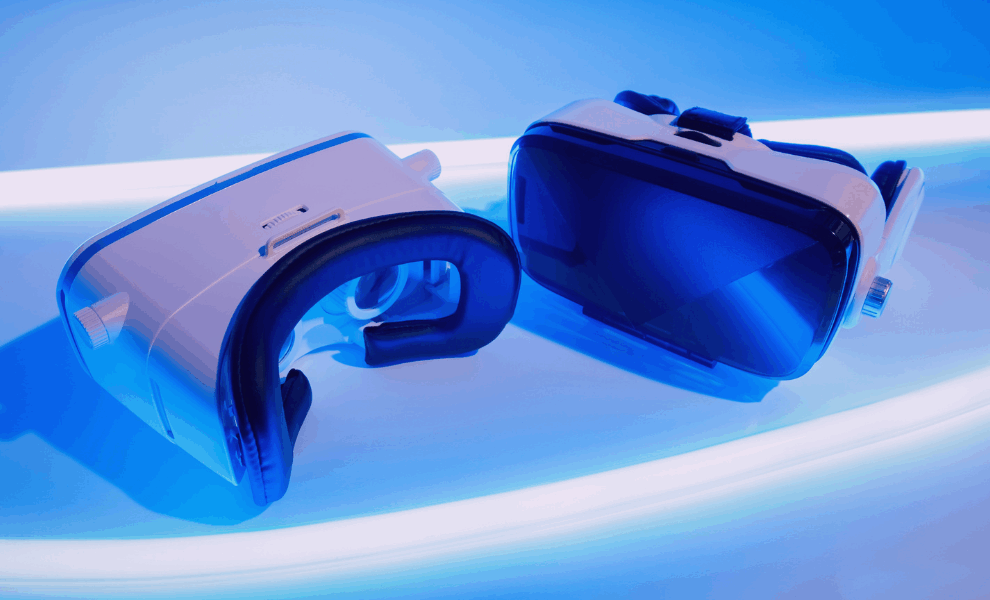Training in virtual reality used to seem like a new technology. With such innovations, professionals can easily handle urgent situations, run big machinery, and complete complex procedures. All of this is feasible without the fear of making expensive errors in real-world situations.
Recent research reinforces what pioneers in the field long ago learned: VR training simulations aren’t merely fun but highly effective as well. Organizations using these simulation-based learning processes experience a striking 76% improvement in performance and skill retention over traditional methods.
Understanding Virtual Reality Simulations:
Digital twins of real-world settings are produced using virtual reality simulations. To interact with people, specialist technology like haptic controllers and head-mounted displays are employed. The technology combines powerful rendering engines with spatial audio and motion tracking to create an immersive experience that convincingly mimics reality.
Underlying architecture that responds dynamically to user actions sets high-quality VR training simulations apart. The best systems incorporate physics engines that mimic real-world properties and AI-driven scenarios. They adapt to learner decisions and analytics frameworks that capture performance metrics.
These technical elements operate unobtrusively in the background while trainees concentrate on learning. They vary from sophisticated surgical procedures to crisis response routines in the workplace. Trainees don’t simply watch; they learn by doing and actively participate.
Four Advantages of VR Training Simulations
Risk-Free Experimentation:
VR simulation eliminates real-world implications from the learning equation. Learners can practice freely with difficult equipment and scenarios without the threat of injury or costly damage. Psychological security causes deeper learning and exploration that will be unaffordable in classroom training.
Improved Knowledge Retention:
VR’s immersion generates compelling memory anchors to procedural knowledge. Muscle memory and spatial cognition also mature together since people physically handle objects and move about in the virtual world.
Principles learned with VR retention remain a long time longer than facts in taken by listening to lectures, observing demonstrations, and reading material.
Rapid Skill Development:
Through repetition and focused practice, virtual reality training diminishes the learning curve. By practicing edge cases that are rarely seen in the real world, trainees can quickly cycle through scenarios and obtain months of expertise in a matter of days. Performance measurements and playback capabilities give a rapid feedback loop that speeds up error repair and method reinforcement.
Total Performance analytics:
Specific data on student behaviors and choice processes are gathered by current VR training software. Such analysis provides unprecedented insight into skill development. To catch undesired habits before they become second nature, teachers can target problem students early and correct them accordingly.
Applications of Virtual Reality Training Simulations
Healthcare and Medical Training:
Complex procedures are now practiced by surgeons and other medical personnel in anatomically correct virtual reality environments. These simulations allow for unlimited attempts at rare surgical scenarios without patient risk.
When teams practice together in virtual operating rooms prior to challenging real-world situations, healthcare facilities report noticeably better results.
Industrial and Manufacturing:
Factory workers train on virtual replicas of million-dollar equipment without the need to interrupt production. Rather than training with digital twins of specialist equipment, virtual reality allows technicians to execute maintenance techniques on such machines.
Extensive VR training courses have led to an enormous decline in accidents and equipment damage on the production line.
Emergency Response:
Virtual reality is employed by responders to practice high-stress crisis situations that are not possible to recreate safely. The VR training simulations incorporate accurate physics models for hazardous material dispersion, fire dynamics, and structural collapse. Coordination procedures can often be practiced by teams in a range of situations.
Aviation and Aerospace:
Pilots experience flight anomalies and emergency procedures in photorealistic cockpit simulations. VR training simulates extremely rare but critical scenarios, such as twin-engine failure or rapid decompression at altitude.
Flight crews develop decision-making skills under pressure without the enormous costs and logistics of traditional flight simulators.
Military and Defense:
Combat troops practice complex operations in geographically accurate battlespace replicas. Realistic ballistics, tactical communications systems, and opponent AI that adjusts to student choices are all included in the simulations.
By simulating the sensory overload of combat situations, high-fidelity environments help soldiers build situational awareness and collaboration.
The Future of VR Training Simulations!
With developments in haptic feedback and neural interfacing, the next generation of VR training will make it harder to distinguish between virtual and real-world environments. The tactile sensations produced by emerging technologies like targeted ultrasonic feedback and full-body haptic suits will closely resemble interactions in the real world.
These platforms will enable geographically dispersed teams to train together in shared virtual spaces with near-zero latency. Trainers located anywhere in the world will guide learners through complex procedures using digital twins that incorporate real-time data from IoT sensors on actual equipment.
For the latest updates on VR Training Simulations and more, keep visiting us at HiTechNectar.
Recommended For You:
Data Visualization in AR and VR
Understanding Mixed Reality: A Combination of AR & VR


